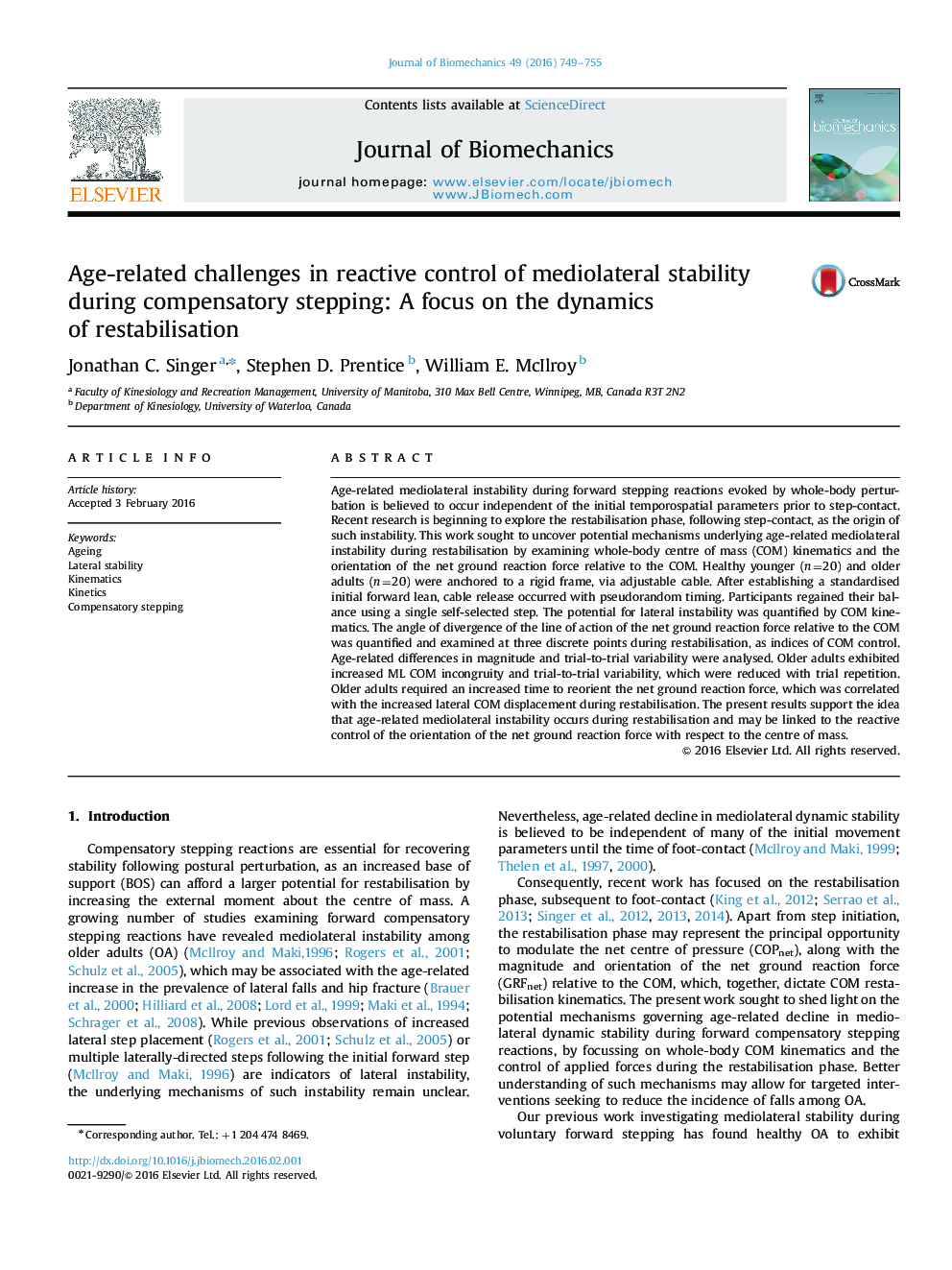| Article ID | Journal | Published Year | Pages | File Type |
|---|---|---|---|---|
| 871899 | Journal of Biomechanics | 2016 | 7 Pages |
Age-related mediolateral instability during forward stepping reactions evoked by whole-body perturbation is believed to occur independent of the initial temporospatial parameters prior to step-contact. Recent research is beginning to explore the restabilisation phase, following step-contact, as the origin of such instability. This work sought to uncover potential mechanisms underlying age-related mediolateral instability during restabilisation by examining whole-body centre of mass (COM) kinematics and the orientation of the net ground reaction force relative to the COM. Healthy younger (n=20) and older adults (n=20) were anchored to a rigid frame, via adjustable cable. After establishing a standardised initial forward lean, cable release occurred with pseudorandom timing. Participants regained their balance using a single self-selected step. The potential for lateral instability was quantified by COM kinematics. The angle of divergence of the line of action of the net ground reaction force relative to the COM was quantified and examined at three discrete points during restabilisation, as indices of COM control. Age-related differences in magnitude and trial-to-trial variability were analysed. Older adults exhibited increased ML COM incongruity and trial-to-trial variability, which were reduced with trial repetition. Older adults required an increased time to reorient the net ground reaction force, which was correlated with the increased lateral COM displacement during restabilisation. The present results support the idea that age-related mediolateral instability occurs during restabilisation and may be linked to the reactive control of the orientation of the net ground reaction force with respect to the centre of mass.
